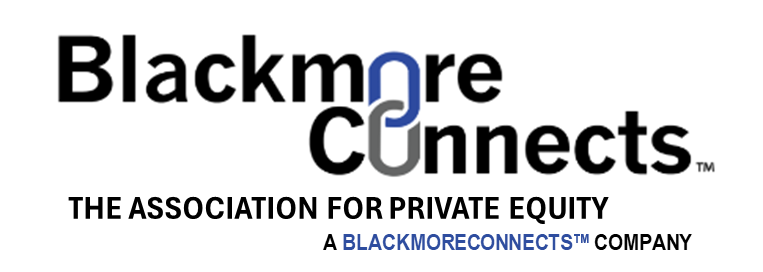Case Study: Transitioning from W2 Wage Slave to Investor Operator
Written By: Gerald O’Dwyer III
The PE Guru — BlackmoreConnects, Inc | July 14, 2024
In this detailed case study, we will explore the journey from being a W2 wage slave to becoming an investor-operator in the private equity (PE) field. The focus will be on practical steps, financial projections, and the benefits of this transformative journey. By leveraging the BlackmoreConnects process, we will demonstrate how this difficult path can be made almost easy.
Why Make the Switch?
Current Challenges:
Limited salary growth (average 3% annually)
Limited bonus opportunities
High tax burden (37% on average)
Opportunities in Private Equity:
Higher starting salaries (starting at $300,000)
Significant bonuses (up to 50% of salary)
Equity ownership and carried interest opportunities
Long-term financial security and wealth accumulation
The Journey: A Step-by-Step Guide
Step 1: Initial Preparation
Understand Your Goals: Define why you want to transition into private equity. Are you seeking financial freedom, professional growth, or new challenges?
Financial Commitment: Prepare for an initial investment in education, networking, and conferences, estimated at $75,000 over three years.
Skill Development: Enroll in courses and workshops to understand private equity fundamentals, deal structures, and financial modeling.
Step 2: Building Your Deal Thesis
Research: Utilize tools like PitchBook and Cyndex to gather data on potential deals and market trends.
Develop a Thesis: Focus on industries with fragmented markets, unique business models, and opportunities for consolidation.
Get Feedback: Attend conferences and workshops to refine your thesis with input from private equity professionals.
Step 3: Networking and Deal Sourcing
Join Professional Associations: Become a member of ACG, AMA, TMA, and BlackmoreConnects to access a network of professionals.
Attend Conferences: Plan to attend at least 10 conferences per year to meet potential investors, advisors, and deal sources.
Leverage LinkedIn: Use LinkedIn to connect with industry professionals, but rely more on face-to-face interactions at conferences for meaningful connections.
Step 4: Engaging with Private Equity Firms
Targeted Outreach: Use personalized messaging to reach out to PE firms. Highlight your expertise, deal thesis, and mutual interests.
Build Relationships: Develop relationships with PE firms by attending their events and engaging in meaningful conversations.
Seek Feedback: Regularly seek feedback on your deal thesis from PE firms to refine and improve it via conferences and follow up meetings.
Step 5: Securing Your First Deal
Identify Potential Deals: Use tools like PitchBook to find companies that fit your deal thesis.
Negotiate: Approach business owners and negotiate terms, focusing on acquiring companies with at least $3 million in EBITDA.
Due Diligence: Conduct thorough due diligence to ensure the deal aligns with your investment criteria and goals.
Financial Projections
Current Career Path:
Salary: $250,000 per year
Annual Growth: 3%
Bonus: $50,000 per year
Total Compensation Over 10 Years: $2.9 million (after taxes)
Private Equity Path:
Starting Salary: $300,000 per year
Salary Growth: 5% per year
Bonus: $150,000 per year
Carried Interest: 20%
Total Compensation Over 10 Years: $8.1 million (after taxes)
Difference in Compensation Over 10 Years: $5.2 million
Action Plan for the Next 24 Months
Build Relationships: Aim for 200 new PE firm connections and 50 owner conversations per year.
Develop Multiple Deal Theses: Create at least three well-developed deal theses to increase meeting opportunities.
Attend Conferences: Participate in at least 10 ACG, AMA, and TMA conferences annually.
Leverage BlackmoreConnects: Utilize the resources and networking opportunities provided by BlackmoreConnects to accelerate your journey.
Case Study: Derek Ellington
Derek Ellington, a former financial services executive, transitioned into private equity through the BlackmoreConnects program. His journey included:
Attending multiple conferences and workshops
Developing a deal thesis focused on AI-supported small business lending
Building a network of over 150 PE firms
Securing a meeting with a top 10 PE firm, resulting in interest in his thesis
Derek’s success demonstrates the power of persistence, strategic networking, and leveraging professional resources.
Tools and Resources
PitchBook: Essential for deal sourcing, understanding market trends, and connecting with PE firms.
Cyndex: Useful for advanced search, detailed insights, and relationship mapping.
BlackmoreConnects: Provides access to exclusive workshops, conferences, and a network of PE professionals.
Conclusion
Transitioning from a W2 wage slave to an investor-operator in private equity is a challenging but rewarding journey. By following a structured action plan, leveraging professional resources, and persistently building your network, you can achieve significant financial growth and professional development. The BlackmoreConnects process, with its emphasis on measurable, repeatable strategies, makes this transition almost easy.
Q&A
Q: How much initial investment is required? A: Approximately $75,000 over three years, covering education, networking, and conferences. If you just want to follow the BlackmoreConnects path only – then the cost is less than $10,000 a year.
Q: What is the average starting salary in private equity? A: The average starting salary is around $300,000, with significant growth potential.
Q: How can I develop a deal thesis? A: Use tools like PitchBook and Cyndex to research market trends, focus on fragmented industries, and seek feedback from PE professionals.
Q: Why are conferences important? A: Conferences provide opportunities for face-to-face networking, which is crucial for building meaningful relationships with PE firms.
By following these steps and leveraging the resources available, you can successfully transition into the private equity field and achieve your financial and professional goals.
